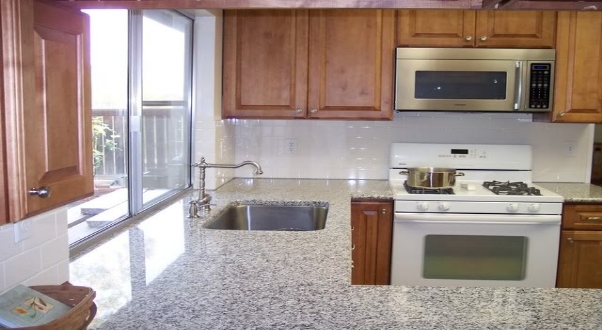Limestone is slowly gaining popularity as the material of choice for use in home worktops for various reasons. It’s incredible adaptability give it an edge over every other stone and its elegant appearance grants all kitchens and bathrooms where it is installed a premium, luxury look. Limestone is generally identified as a very sophisticated material, and the following article lists its various installation areas.
Limestone worktops are a lot like the soapstone ones, except that they have a velvety smooth finish and are available in colours similar to the travertine stone, in neater variants with fewer variations in the pattern. The maintenance and durability of the limestone vary according to its quality, so it’s imperative to take time and choose the right limestone for your usage.
Limestone is available in a range of colours from exotic darker shades that afford the stone a sleeker look and are often chosen in modern, urban interior designs, whereas the softer, lighter tones of the same stone in shades of beige, white, pink and gold are essential in creating a warm, homely feeling of a home.
Marble and Travertine are close cousins of this extremely adaptable stone, and in some of its versions it has seashells and fossils embedded in its top surface, making the worktops truly collectors pieces that are visual fantasies come alive.
Types of Limestone
While some varieties of limestone are extremely hard and dense and can be polished till they gleam, others are naturally honed and used most often. A few limestone brands are soft that make them capable of degradation and crumbling easily and are hence not preferred for use. The softer versions of this stone are also highly porous, absorbent and stain easily from food spills, beverages and foods.
Limestone as a natural stone is the predecessor marble, and undergoes years of transformations under high heat and pressure to emerge as marble. Hence, marble, travertine and limestone belong to the same family and often, in confusion, are named wrong while storing or using.
Uses and Location of Limestone Installation
Limestone makes an ideal material for use in kitchen worktops, only if dense variety of the stone is chosen. Even then, the issue of etching is a big disadvantage and is one which cannot be stopped or avoided.
This material can ideally be used as a bathroom fitting in the form of a bathroom worktop and basic furniture tops. It’s also gaining popularity in its use as an excellent floor tile, that can be installed anywhere in the house. Showers areas and bathrooms also benefit from limestone being used in parts of the floor along the bathtubs and shower areas to provide secure footing at all times.

To choose among the wide options of Limestone available in the market today, take a closer look at the selection offered by MKW Surfaces, and choose from a wide range of limestone worktops in London, and also quartz worktops in a range of colours and design. Which one is your favourite? Let us know in the comments below!

